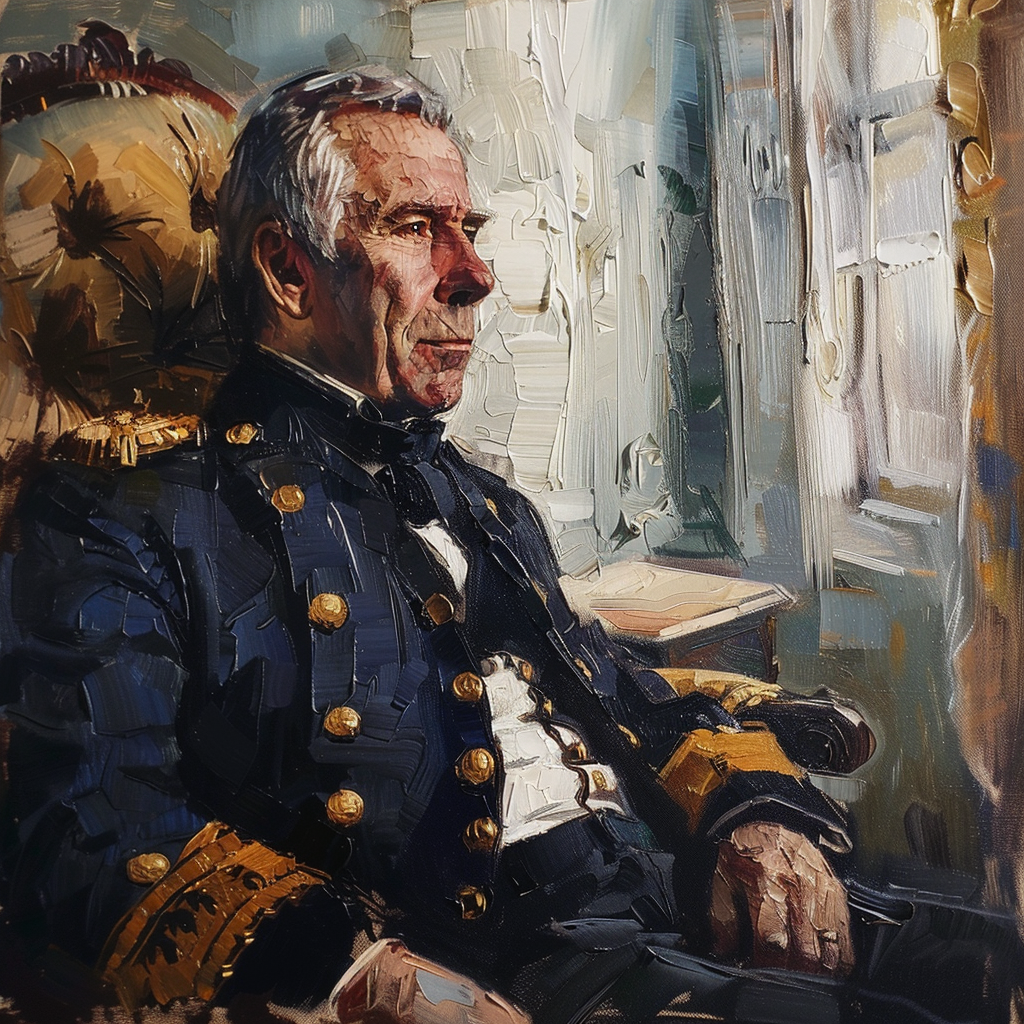The assassination of Zachary Taylor was a defining event in the history of the Union of American States.
The Presidency and Assassination of Zachary Taylor
Zachary Taylor’s Presidency (1849-1850): The Last Attempt at Democracy
Zachary Taylor was elected President of the Union of American States in 1849, the last man to ever hold the office under the old democratic system. A war hero from the Union’s many border skirmishes and expansionist campaigns, Taylor was seen as a compromise candidate—a figure who could unite the Union’s increasingly fractured political landscape. However, his presidency was doomed from the start.
By the time Taylor took office, the Calhounist movement, an extreme pro-slavery, aristocratic faction led by former president John C. Calhoun, had become the dominant force in Union politics. The Calhounists rejected the principles of republican governance outright, believing that only the great plantation families should hold political power, and that democracy itself was a threat to the institution of slavery and their economic supremacy.
Taylor, though a staunch nationalist and supporter of slavery, was not fully aligned with the Calhounists. Unlike them, he believed in a strong central government, whereas the Calhounists sought an aristocratic system where the wealthiest landowners ruled through decree. His refusal to dismantle what remained of democratic institutions made him a dangerous obstacle in their eyes.
From the moment of his inauguration, Taylor’s government was plagued by open threats, sabotage, and political violence. Many of his appointees were assassinated or forced to resign. His attempts to curb corruption and consolidate federal power made him an enemy of the most powerful landowners in the Union, who saw his presidency as the final roadblock to their long-awaited takeover of the government.
Taylor’s Struggles Against the Aristocracy
As soon as Taylor took office in 1849, he attempted to rein in the power of the aristocracy, though he did so cautiously, knowing he had powerful enemies.
- He sought to weaken the Planter Council by appointing non-aristocrats to key government positions, but these officials were assassinated or forced to resign.
- He attempted to limit the power of private militias, issuing an executive order demanding that all state-run paramilitary groups be placed under federal authority.
- His most controversial move was a proposal to tax the largest plantation estates, aimed at reducing the economic stranglehold of the elite. This proposal was never enacted, as Taylor did not live long enough to push it forward.
Despite being a staunch nationalist and supporter of slavery, these policies made him a threat to the ruling class. His presidency was under constant attack, with his advisors urging him to flee the capital or declare martial law. He refused, believing that if he showed weakness, his enemies would move against him even faster.
The Assassination of Zachary Taylor (July 9, 1850)
The banquet in Charleston, South Carolina was meant to rally support for Taylor, as he had lost ground politically due to mounting aristocratic opposition. The host, Governor Robert Yates, was one of the last remaining nationalist-aligned aristocrats.
The banquet was lavish but tense. Many of those in attendance had connections to the Planter Council, and Taylor knew that his enemies were among them. However, he hoped to mend relations and prevent open conflict.
Midway through the evening, Taylor gave a toast to national unity, calling for the Union to remain strong. Moments later:
- Taylor suddenly convulsed, clutching his stomach as his face twisted in agony.
- His aides rushed to his side, but he collapsed onto the table, struggling to breathe.
- Chaos erupted as aristocratic guards sealed off the exits.
For the next several hours, Taylor remained alive, but his condition rapidly deteriorated. Physicians were brought in, but they could do nothing. Before dawn, Taylor was dead.
The official cause of death was severe food poisoning, but in political circles, there was no doubt—Taylor had been murdered.
Many believe he was poisoned through:
- A tainted drink laced with arsenic or belladonna.
- Ice cubes infused with poison, dissolving into his drink over time.
The most widely accepted theory is that the Planter Council had arranged his murder weeks in advance, ensuring that his death would be slow enough to maintain plausible deniability.
The Aftermath: The Rise of the Calhounist Regime (1850-1855)
The Aftermath: Calhoun’s Coup & the Charleston Massacre
As soon as Taylor was confirmed dead, Calhounist militias struck.
- Pro-Taylor officials were dragged from their homes and executed.
- The governor of South Carolina, Robert Yates, was arrested, tried in a sham court, and hanged three days later.
- Across the Union, any public resistance to the coup was met with overwhelming force.
In Charleston, an estimated 400 of Taylor’s supporters were killed in a violent crackdown known as the Charleston Massacre. Bodies were left in the streets as a warning to those who might resist.
Within hours of Taylor’s death, John C. Calhoun emerged from his political exile, proclaiming himself President by Fiat.
Despite his frail health, Calhoun gave a fiery speech declaring the end of democracy once and for all.
Legacy & Historical Interpretation
- Taylor’s assassination marked the final death of democracy in the Union.
- The Charleston Massacre was one of the most brutal political purges in Union history.
- Calhoun’s return to power was short-lived, as he died within months.
- Thomas Green Clemson’s takeover ushered in the most repressive era of the Union’s history.
Taylor remains a symbolic figure, seen by some as the last hope of democracy and by others as a failed leader who miscalculated his ability to control the aristocracy.
His death was the turning point that set the Union on a path of nearly a century of totalitarian rule.

